Abstract
Interspersed reinforcement and extinction during discrimination learning generate a U-shaped gradient of inhibition about the stimulus correlated with extinction. The present work showed that extinction is not a necessary determinant of inhibitory stimulus control. In Exp. I, a reduction in the rate of reinforcement, through a shift from a multiple variable-interval 1-min variable-interval 1-min schedule to a multiple variable-interval 1-min variable-interval 5-min schedule, resulted in a post-discrimination line orientation gradient of inhibition about the stimulus correlated with the variable-interval 5-min schedule. In Exp. II, the rates of reinforcement, correlated with a pair of stimuli, were held constant during a shift from a multiple variable-interval 1-min variable-interval 1-min schedule to a multiple variable-interval 1-min differential-reinforcement-of-low-rate schedule. Inhibitory stimulus control about the stimulus correlated with the differential reinforcement of low rate was obtained. In both experiments, a reduction in the rate of responding during one stimulus and behavioral contrast during the other stimulus preceded the observation of inhibitory stimulus control.
Full text
PDF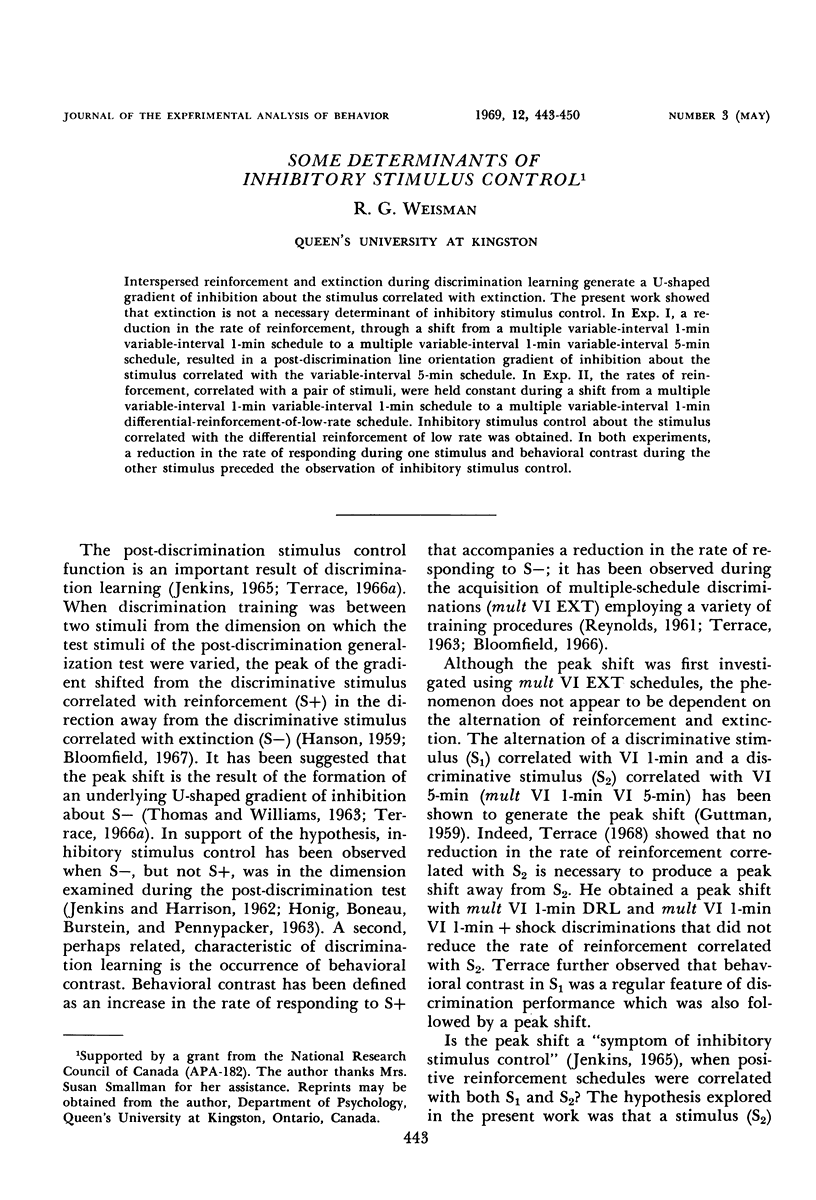
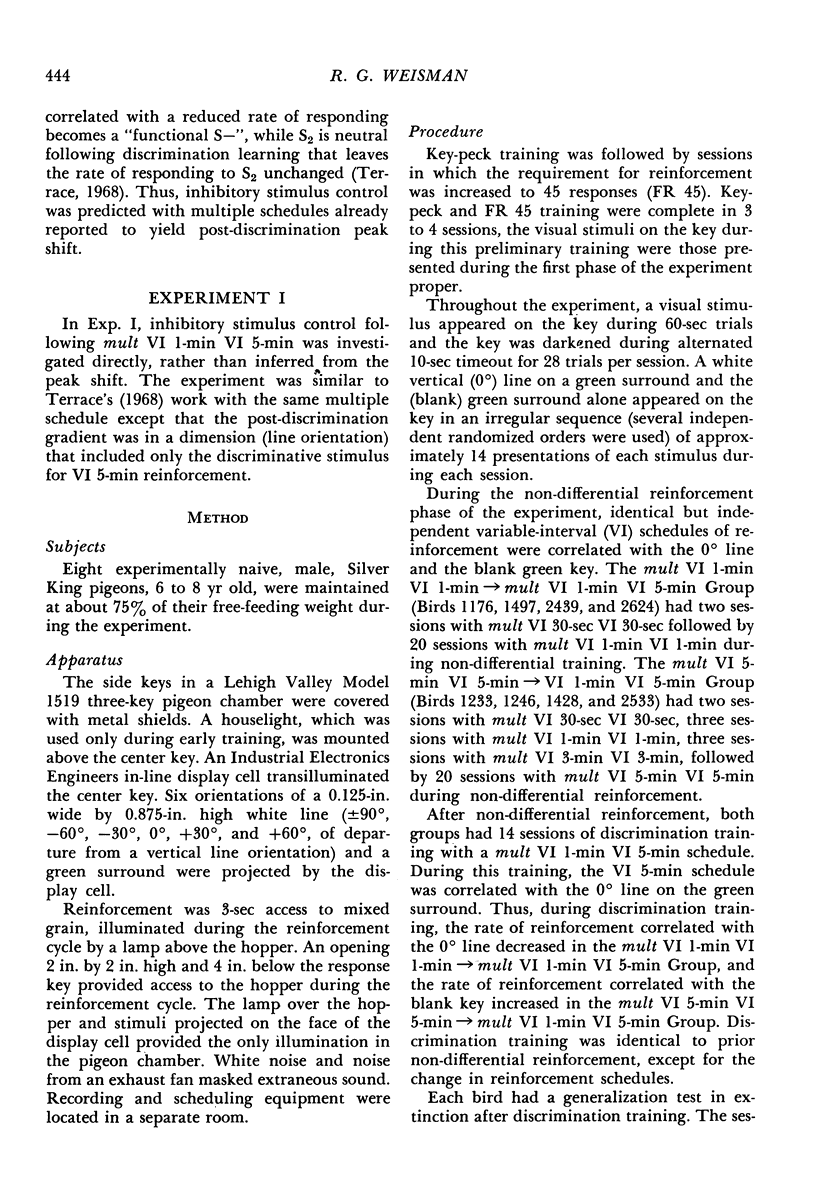
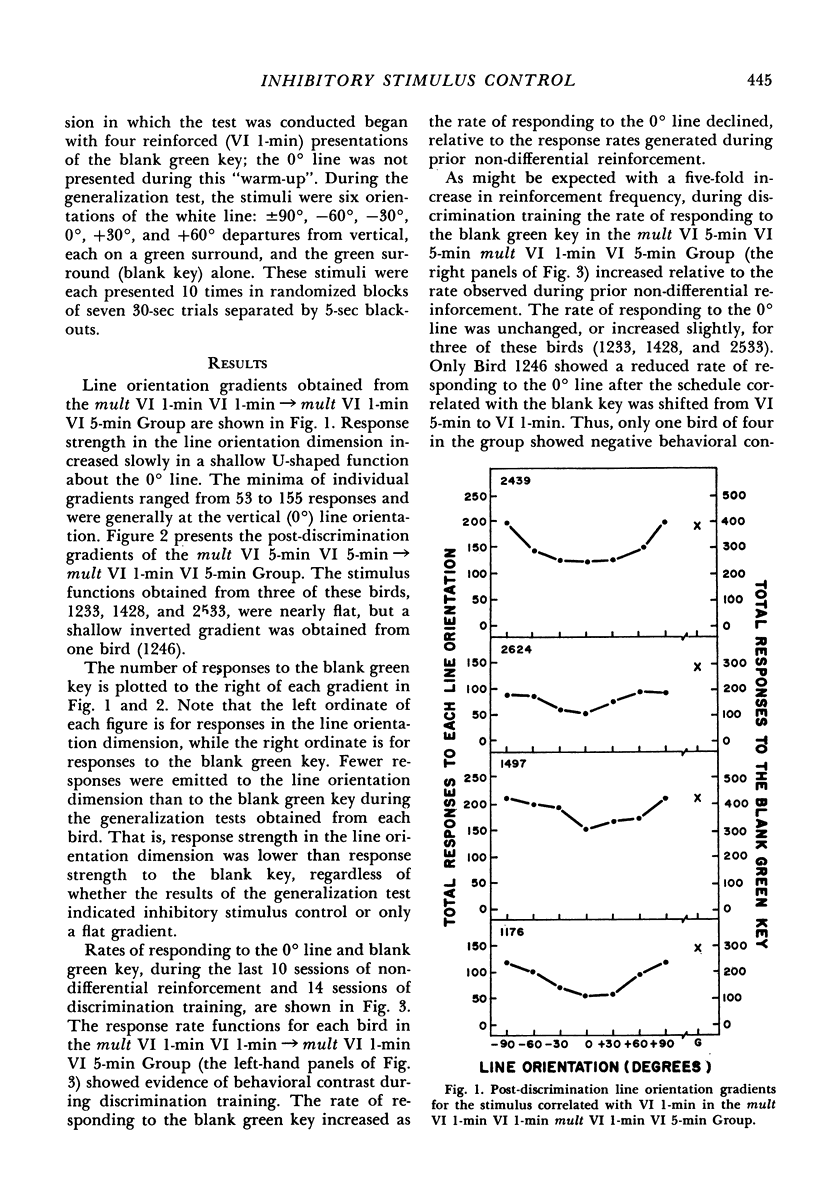
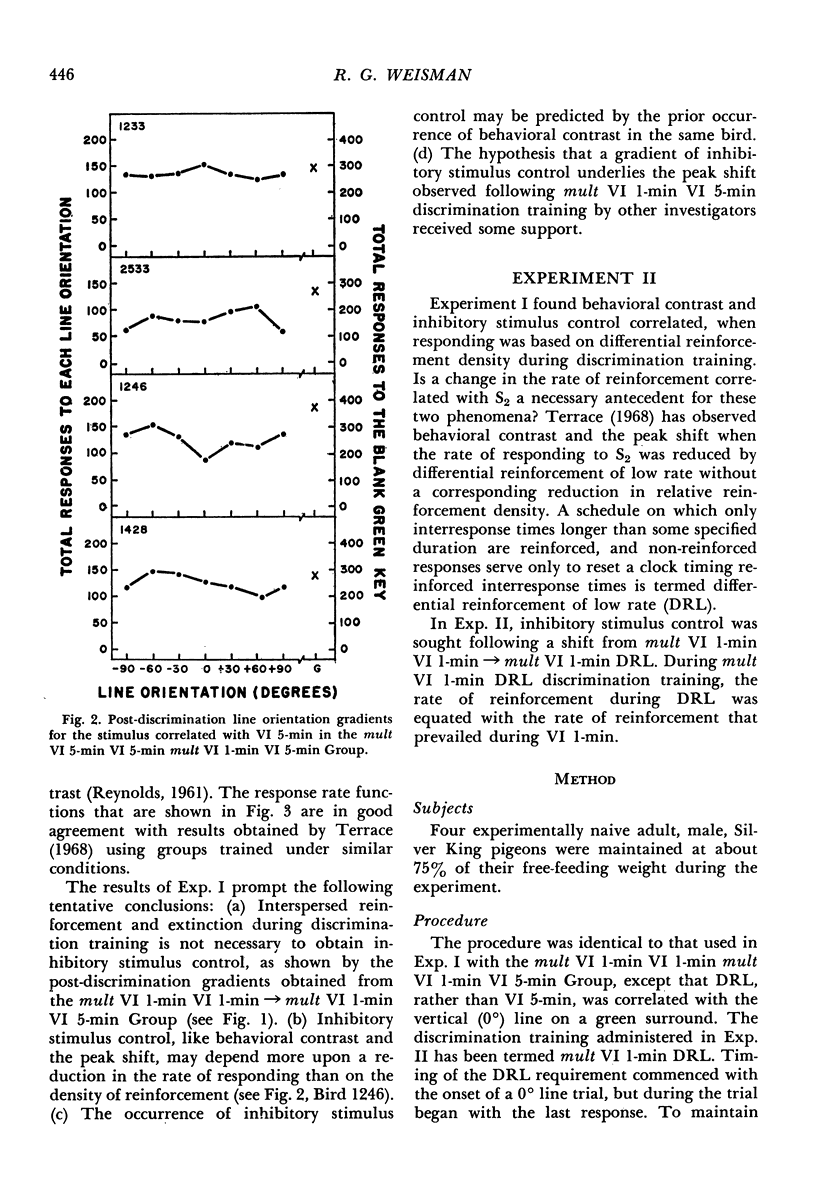
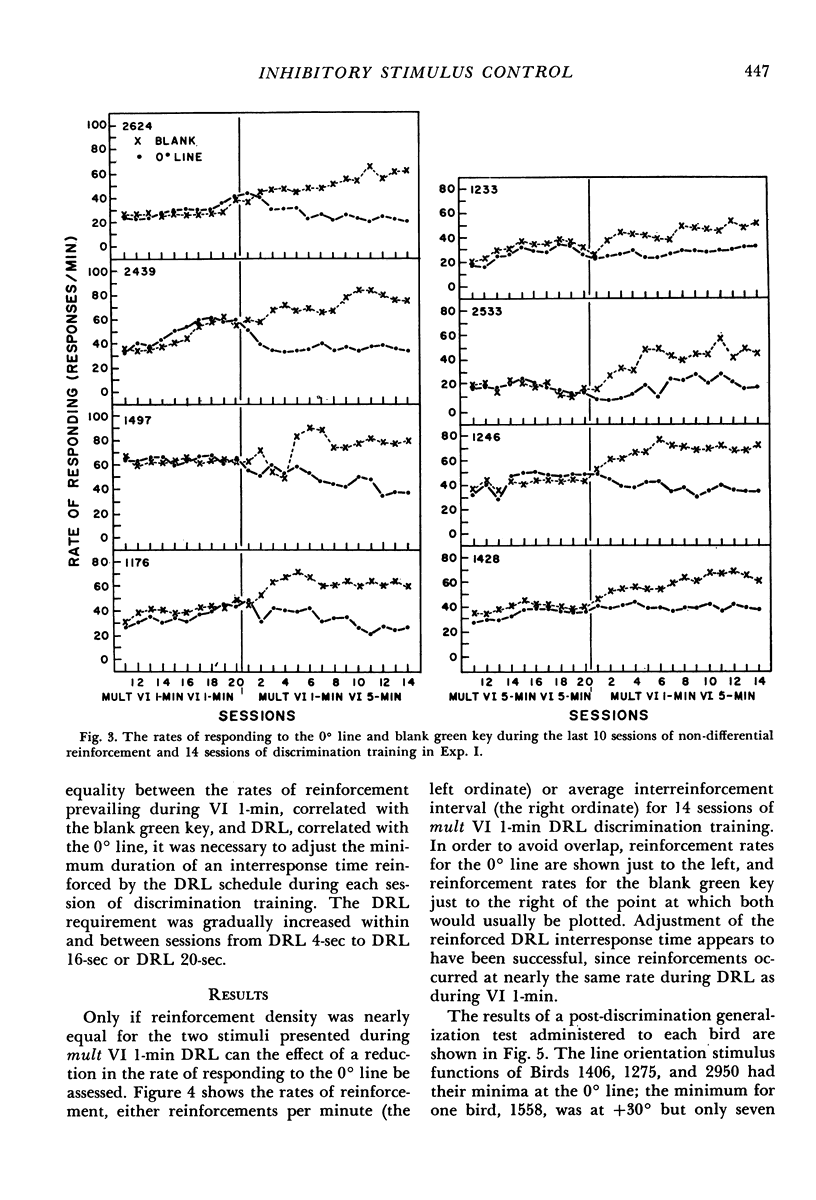
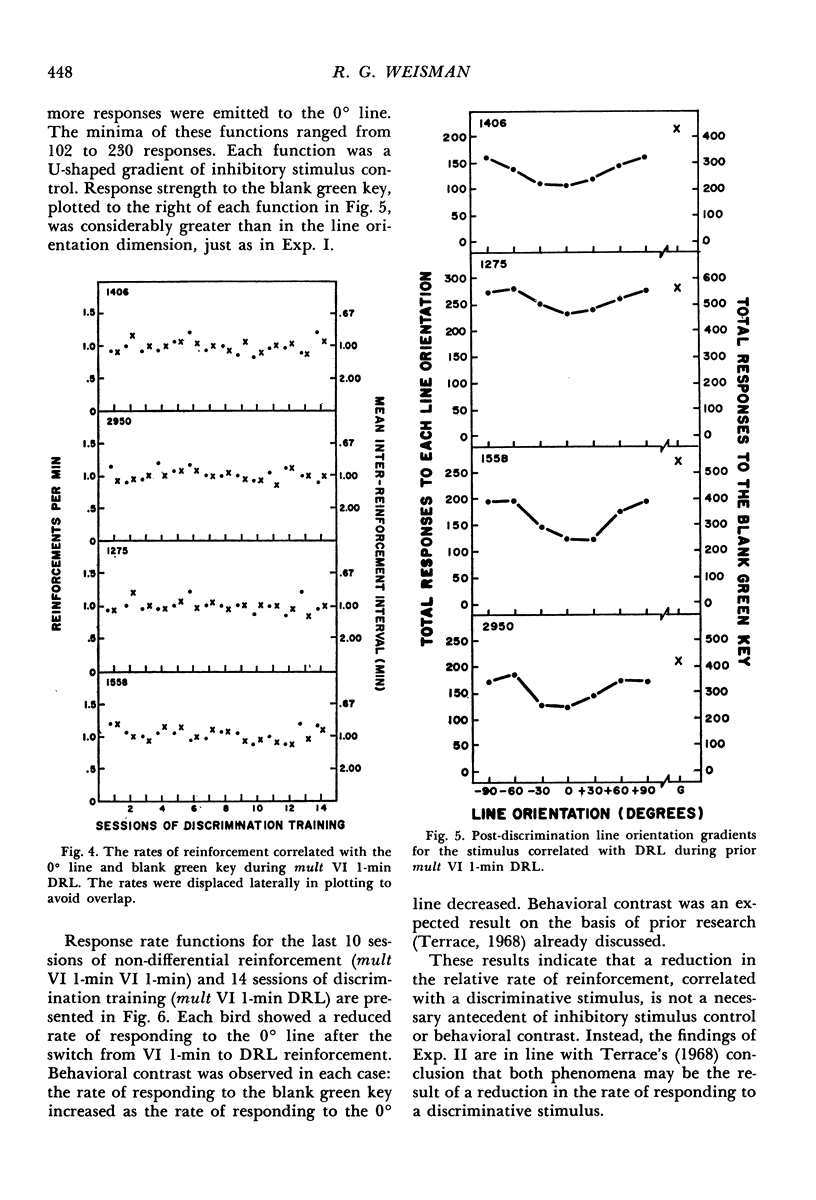
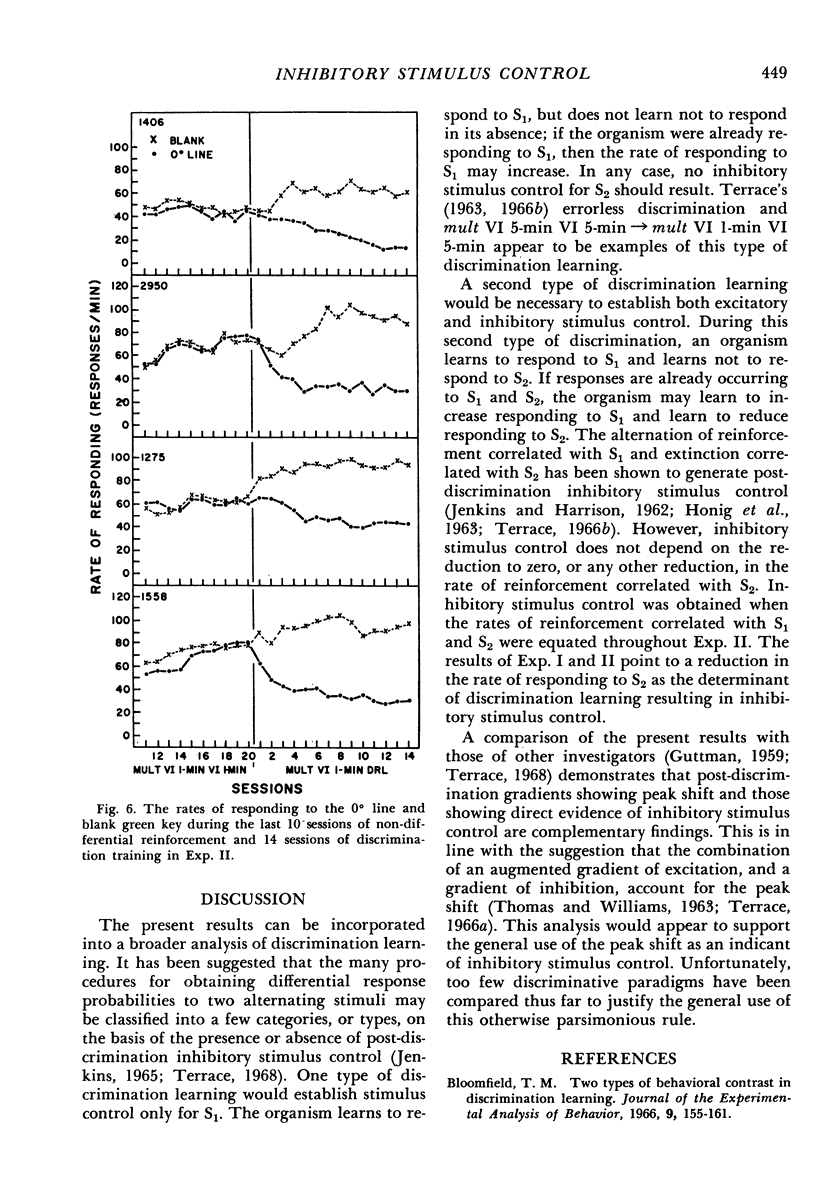
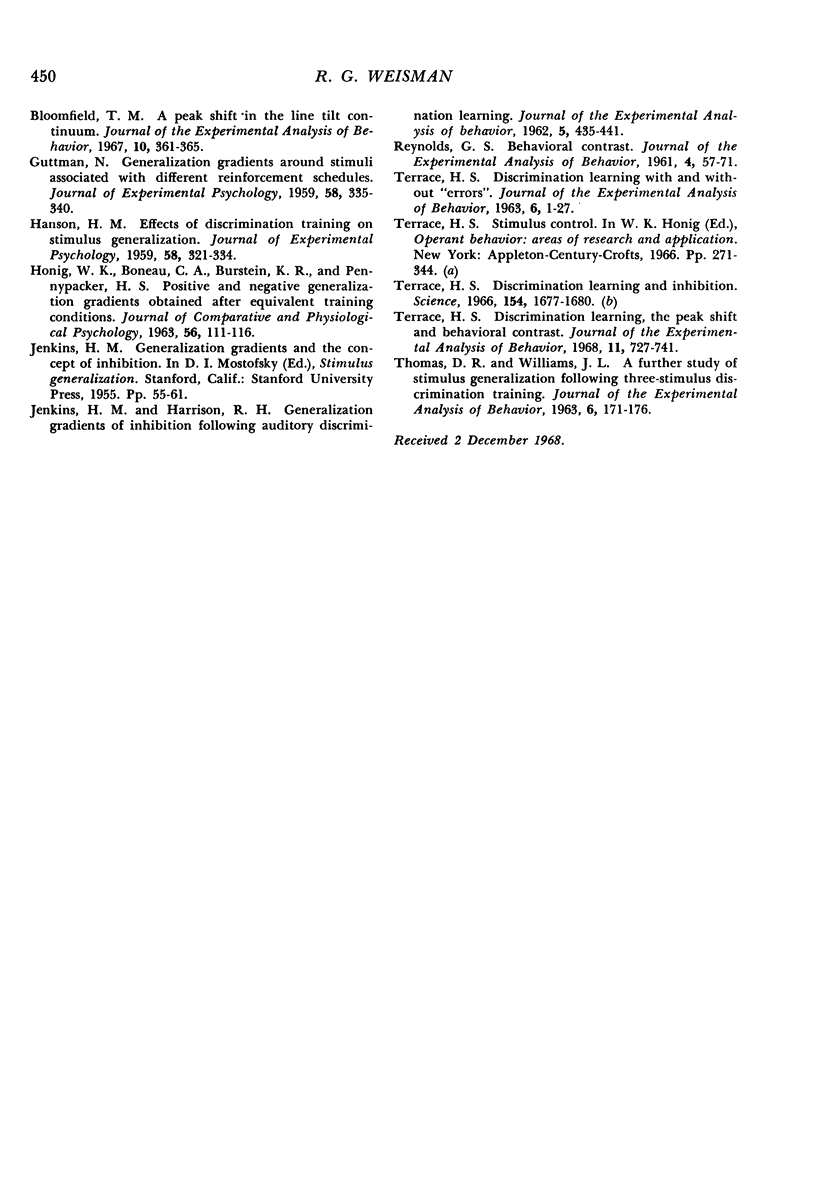
Selected References
These references are in PubMed. This may not be the complete list of references from this article.
- Bloomfield T. M. A peak shift on a line-tilt continuum. J Exp Anal Behav. 1967 Jul;10(4):361–366. doi: 10.1901/jeab.1967.10-361. [DOI] [PMC free article] [PubMed] [Google Scholar]
- Bloomfield T. M. Two types of behavioral contrast in discrimination learning. J Exp Anal Behav. 1966 Mar;9(2):155–161. doi: 10.1901/jeab.1966.9-155. [DOI] [PMC free article] [PubMed] [Google Scholar]
- GUTTMAN N. Generalization gradients around stimuli associated with different reinforcement schedules. J Exp Psychol. 1959 Nov;58:335–340. doi: 10.1037/h0045679. [DOI] [PubMed] [Google Scholar]
- HANSON H. M. Effects of discrimination training on stimulus generalization. J Exp Psychol. 1959 Nov;58:321–334. doi: 10.1037/h0042606. [DOI] [PubMed] [Google Scholar]
- REYNOLDS G. S. Behavioral contrast. J Exp Anal Behav. 1961 Jan;4:57–71. doi: 10.1901/jeab.1961.4-57. [DOI] [PMC free article] [PubMed] [Google Scholar]
- TERRACE H. S. Discrimination learning with and without "errors". J Exp Anal Behav. 1963 Jan;6:1–27. doi: 10.1901/jeab.1963.6-1. [DOI] [PMC free article] [PubMed] [Google Scholar]
- THOMAS D. R., WILLIAMS J. L. A further study of stimulus generalization following three-stimulus discrimination training. J Exp Anal Behav. 1963 Apr;6:171–176. doi: 10.1901/jeab.1963.6-171. [DOI] [PMC free article] [PubMed] [Google Scholar]
- Terrace H. S. Discrimination learning and inhibition. Science. 1966 Dec 30;154(3757):1677–1680. doi: 10.1126/science.154.3757.1677. [DOI] [PubMed] [Google Scholar]
- Terrace H. S. Discrimination learning, the peak shift, and behavioral contrast. J Exp Anal Behav. 1968 Nov;11(6):727–741. doi: 10.1901/jeab.1968.11-727. [DOI] [PMC free article] [PubMed] [Google Scholar]


